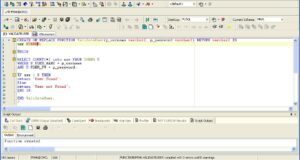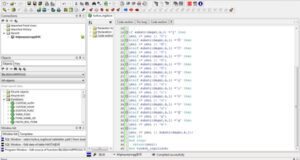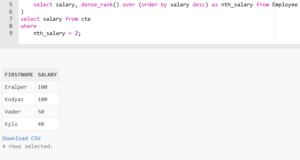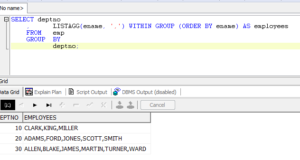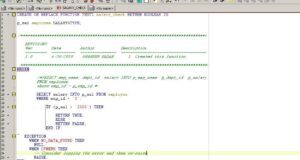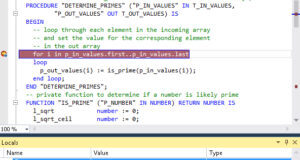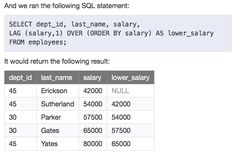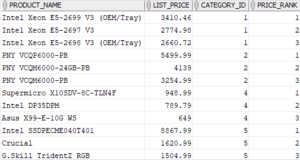Tag: Oracle
Oracle Analytical functions take as an argument an SQL table, which represents a logical intermediate result of SQL-operator processing, where a reference to such a function is used, and return...
The Oracle/PLSQL VARIANCE function returns the dispersion of a set of numbers. Oracle/PLSQL syntax of the VARIANCE function VARIANCE(expression_id )where:expression_id - is a numeric...
Oracle/PLSQL VAR_SAMP function returns selective dispersion of a set of numbers. Oracle/PLSQL syntax of VAR_SAMP function VAR_SAMP(expression_id)expression_id - is a numeric...
The Oracle/PLSQL VAR_POP function returns the dispersion of a set of numbers. Oracle/PLSQL syntax of VAR_POP function VAR_POP(expression_id )where:expression_id - is a numeric...
The Oracle/PLSQL STDDEV function returns the standard deviation of the number list. The STDDEV function can be used in two ways - as an aggregate function or as an analytical function. Syntax #1...
Oracle/PLSQL NTH_VALUE function returns the nth value in an ordered set of values from the analytical window. It is similar to FIRST_VALUE and LAST_VALUE except that NTH_VALUE allows you to find...
Oracle/PLSQL LISTAGG function combines measure_column values for each group based on order_by_clause. Oracle/PLSQL syntax of LISTAGG function LISTAGG (measure_column_id [,...
The Oracle/PLSQL LEAD function is an analytical function that allows you to query more than one row in a table, while not having a table to join. Returns values from the next row in the table. To...
Oracle/PLSQL LAST_VALUE function returns the last value in an ordered set of values from the analytical window. It is similar to the functions FIRST_VALUE and NTH_VALUE. Oracle/PLSQL syntax of...
Oracle/PLSQL LAG function is an analytical function that allows you to query more than one row in a table, while not having an attached table. This returns values from the previous row in the...
Oracle/PLSQL FIRST_VALUE function returns the first value in an ordered set of values from the analytical window. It is similar to FIRST_VALUE and NTH_VALUE. Oracle/PLSQL syntax of FIRST_VALUE...
Oracle/PLSQL RANK function returns the value rank in the value group. It is very similar to the DENSE_RANK function. However, the RANK function may not return a consecutive ranking if the values...
Oracle/PLSQL CREATE TABLE operator allows you to create and define a table. CREATE TABLE syntax in Oracle/PLSQL CREATE TABLE table_name_id ( column1_id datatype [ NULL | NOT NULL...
The Oracle/PLSQL function DENSE_RANK returns the string rank in an ordered group of strings. It is very similar to the RANK function. However, the RANK function can cause an inconsistent ranking...
Oracle/PLSQL CUME_DIST function returns the cumulative distribution of values in the value group. The CUME_DIST function will return a value that is > 0 and <= 1. You can use CUME_DIST in...
Oracle/PLSQL COVAR_SAMP function returns selective covariance of a set of number pairs. Oracle/PLSQL syntax of function COVAR_SAMP COVAR_SAMP( expression1_id expression2_id )where:...




